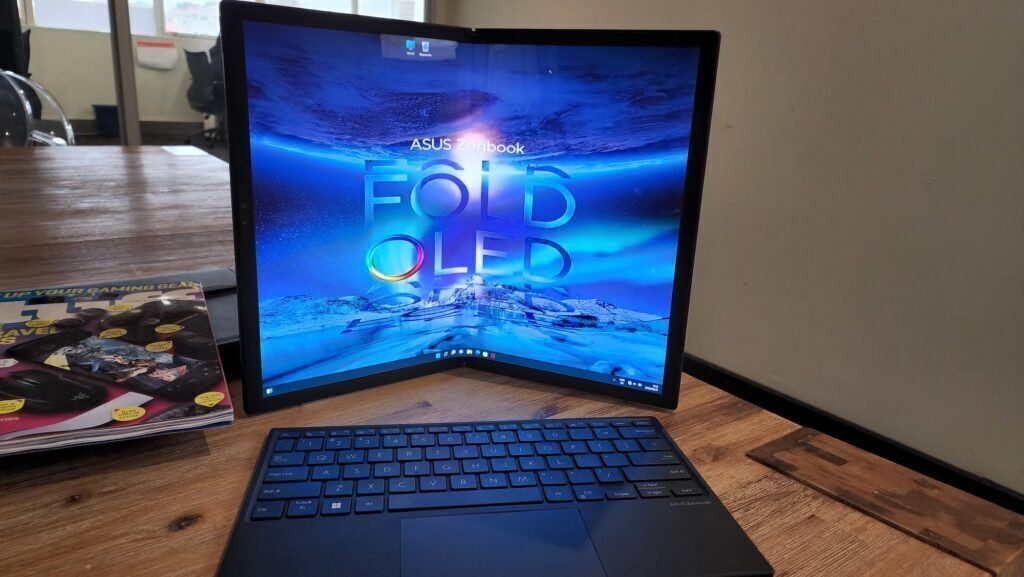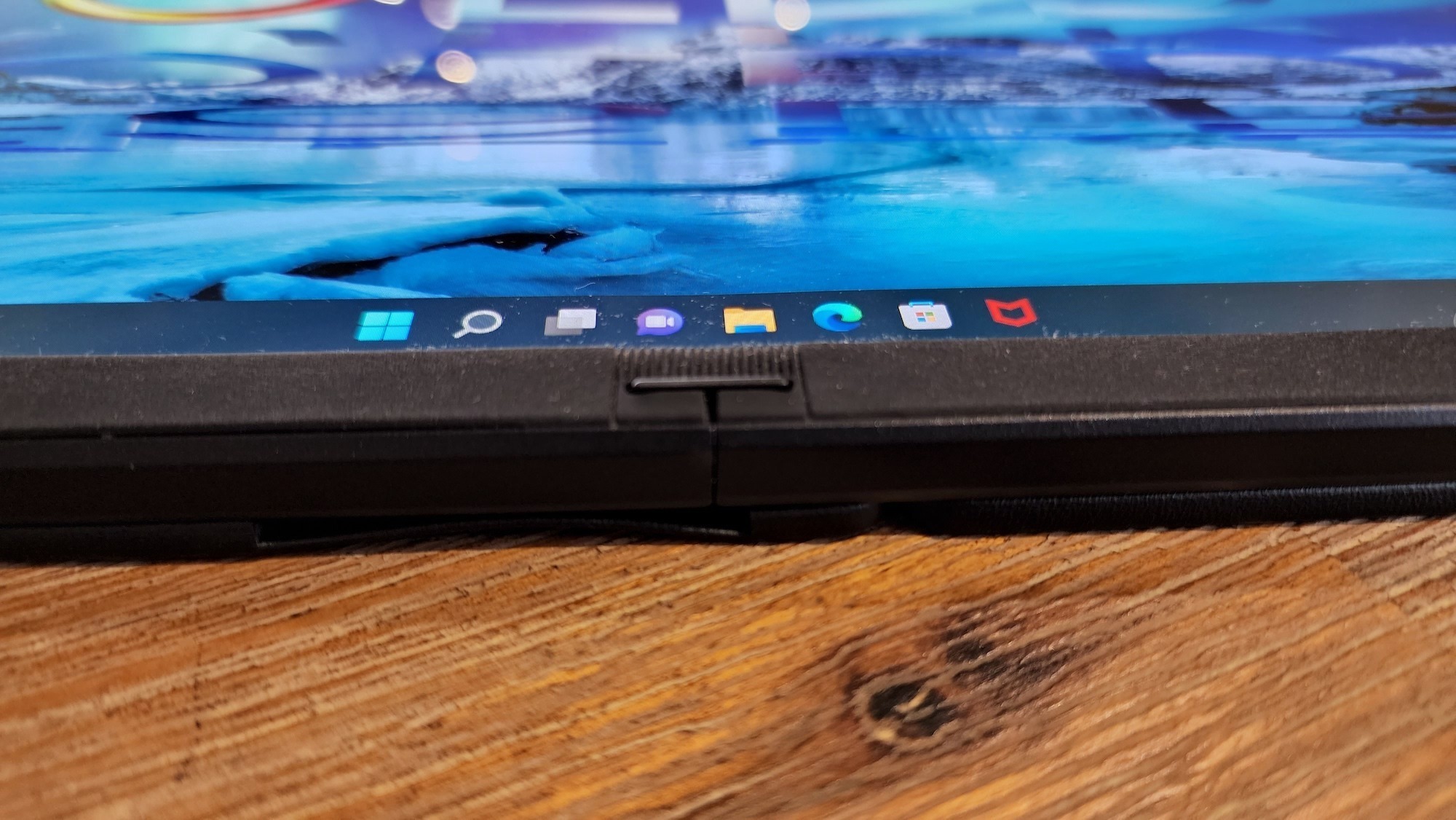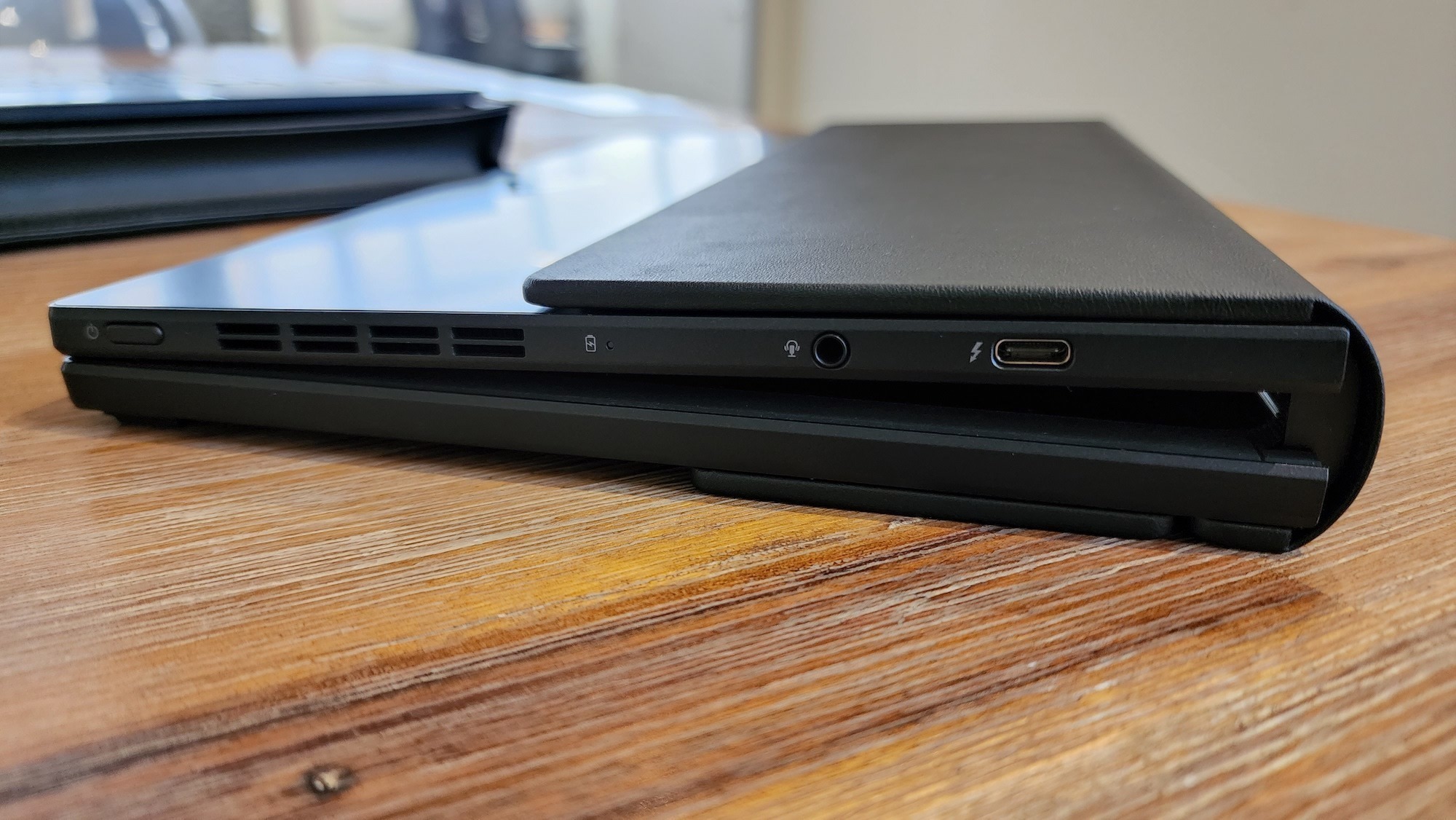Folding smartphones are the up-and-coming thing. Flexible notebooks, like the Asus Zenbook 17 Fold, are something else entirely. Based on our brief time with Asus’ computational oddity so far, we can see the attraction. But, on the other hand, it also feels a little gimmicky.
This might be unfair, and it’s something we’re keeping in mind. Samsung’s original Fold smartphone felt much the same when it launched. In more ways than one, but we’ll get to that shortly. We’ve spent a couple of hours in the company of the Zenbook 17 Fold so far. Initial impressions are that it’s a technical success — but you probably won’t ditch your regular laptop for it right now. In other words, it’s just like almost every other flexible smart device on the market these days.
Delicate little Fold
Comparisons between the first Galaxy Z Fold and Asus’ Zenbook 17 Fold are especially apt when you examine the build Asus has gone for here. It’s got an advertised 8.7mm thickness, but that’s a touch deceptive. When folded out to its full 17.3in screen size, it’s that thick. If you don’t count the generous padding around the hinge, which serves at least two functions.
It protects the hinge section, and it removes the need to over-engineer the hinge. Some of the moving parts are exposed under the padding. It might pinch skin or pick up detritus if the soft, spongy material didn’t exist. Even with it, there’s a chance of dirt getting into parts of the outer hinge.
Elsewhere, the Zenbook 17 Fold is similarly delicate. The screen is fringed with a soft bezel that’s spongey to the touch. The screen’s crease is held by a pin — Samsung learned this lesson the hard way so Asus didn’t have to. Poking around the display is a sometimes stressful affair. It’s noticeably more fragile than a conventional touchscreen and that stretches to more than just the build.
There are a range of acceptable ways to open and close the Asus Zenbook 17 Fold. Pressing into the screen at mid-points, away from the edges, could cause damage. Which, you know, is fair enough. But it reinforces the Samsung Fold comparison — this is a first-generation device for Asus and it should really be treated that way.
One thing or another
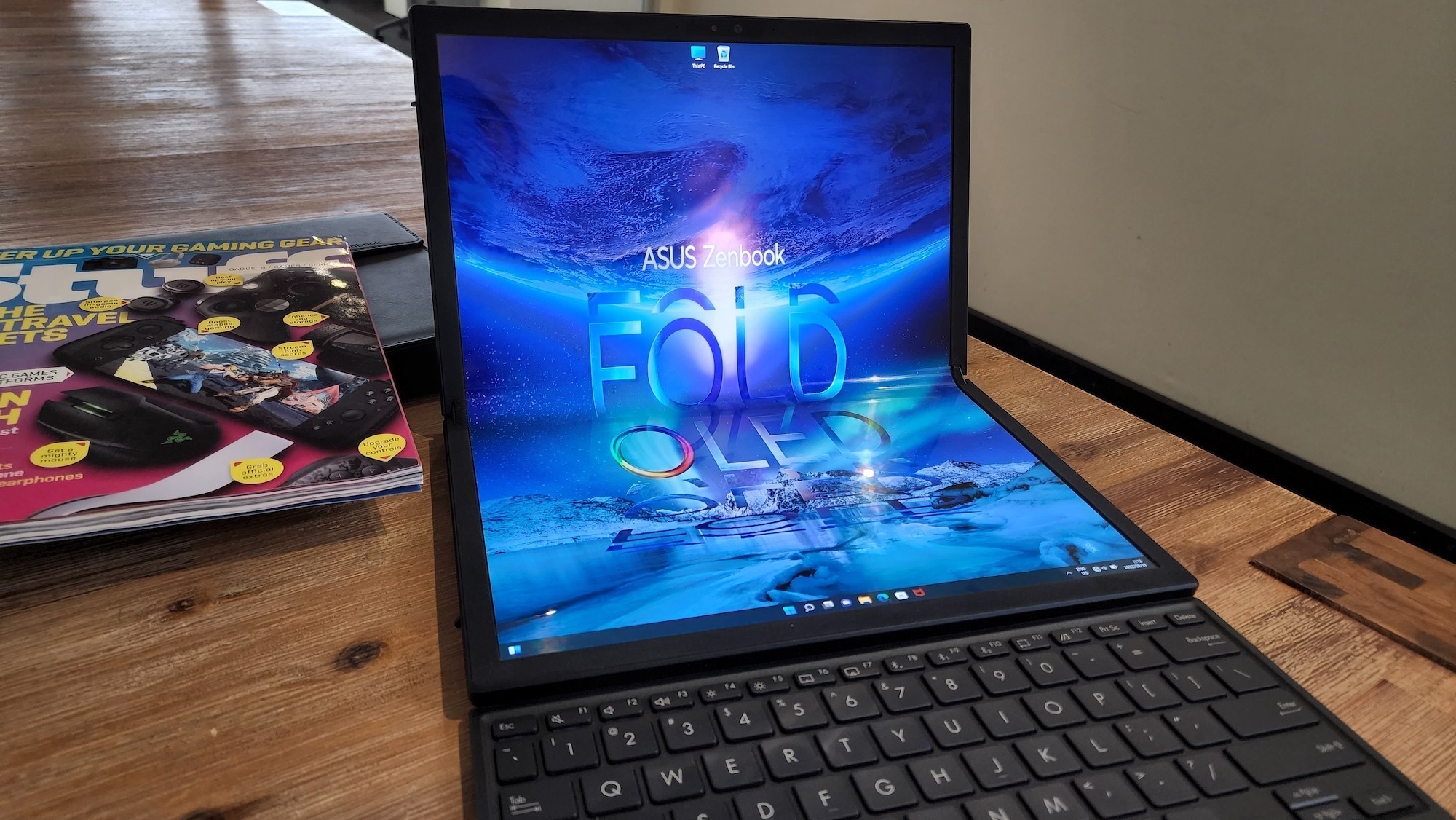
It should also be treated as experimental in another way — we’re not really sure what this computer is for. Marvelling over it and going, “Man, that’s cool” shouldn’t really count as a reason to own one. It’s possible to use it as a tablet, with a fully functional OLED touchscreen that’s nigh-on as good as Asus’ conventional display. You can fold it up so it’s a laptop from the future, but then you’ve got to use a digital keyboard. It’s far simpler to pop the included Bluetooth keyboard on top of the bottom half of the display, turning the Zenbook 17 Fold into a conventional notebook again. Or you can stand the screen up, so it looks like a storytime display at a public library.
So yes, it’s versatile. But it doesn’t, in our limited time with it, do anything that can’t already be done by a 2-in-1 notebook with less worry that something delicate is going to break. Adding an external monitor to a regular Asus Zenbook or grabbing a Lenovo Yoga notebook will offer most of the functions we’ve seen so far. Being able to slip an admittedly powerful 17.3in tablet into a relatively small bag probably won’t outweigh the risks you’re taking owning one.
That’s because the Bluetooth keyboard is a potential point of failure here too. It’s magnetic, so it should stay in place when you fold your PC up like a giant computer sandwich. But if it’s off-centre, there’s a risk that it’ll damage the display. Again, this is a first-gen device problem and it’ll improve in the next model. But all it takes is one mistake and an early adopter is heading back to the adoption agency. So to speak. Please don’t returns any real kids to an adoption agency. That’s incredibly evil.
It’s all here

Still, Asus knows how to make a computer. The Zenbook 17 Fold includes at least as many ports as a usual Zenbook — not that many, but they’re versatile. Okay, so there are just two Thunderbolt ports, and there’s a 3.5mm jack in there as well. Even the Bluetooth keyboard, which is fantastically skinny, doesn’t have more than a power switch and charge port. It’s perfectly familiar if you’ve ever used an Asus keyboard, but it does feel a little flimsy if you’ve balanced it on the bottom screen.
Inside, though, there’s a decent amount of power. 16GB of RAM backs up an Intel Core i7-1250U. That’s not incredibly large, but it’ll more than get the job done. The machine itself isn’t thick enough for a third-party GPU, which is fine. We can’t imagine how annoying it would be to investigate high-end thermal solutions for something like this.
The 17.3in OLED display is Asus’ usual quality — that is, excellent. When unfolded the screen defaults to a 1,920 x 2,560 resolution. If you’re using it like a laptop, or have the keyboard in place, then you’ve got a 12.5in 1.920 x 1,280 screen to play with. There are a bunch of the usual smart features included, like biometric logins, that we haven’t even started playing with.
Asus Zenbook 17 Fold initial verdict
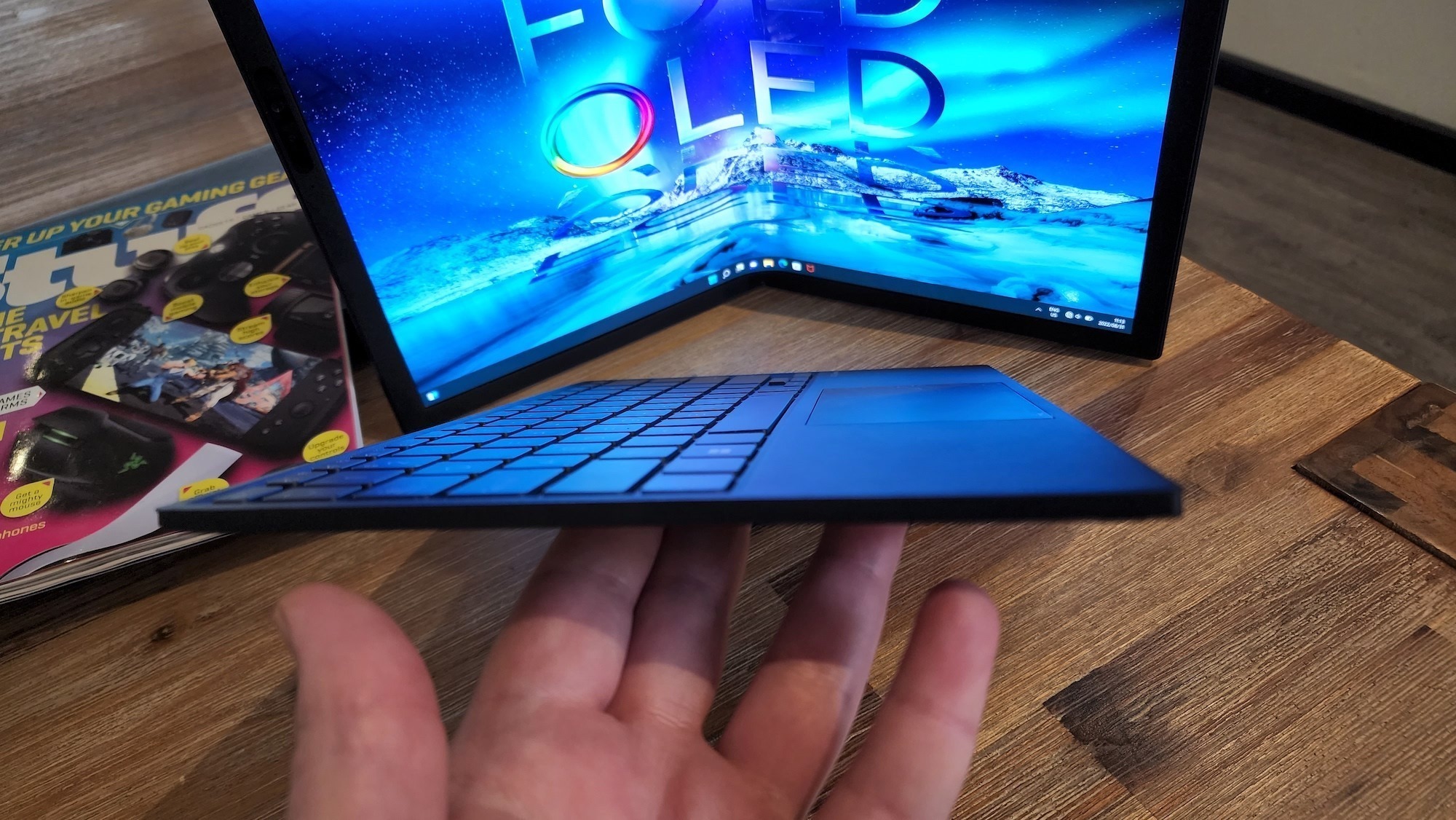
The Asus Zenbook 17 Fold is an impressive-enough technical showcase, but we’re almost 100% certain the company is already working on a better model. It’s a serious feat to take the ‘folding smartphone’ and doing it with a 17.3in screen. But this definitely feels like an early adopter device. That is, you’ll need a chunk of disposable cash and have to not mind teething issues too much in order to make this a must-buy. Most of the immediately-apparent features can be replaced by less sensitive hardware or an external monitor. But hey, maybe that opinion will change by the time the review is done. Stranger things have happened.

